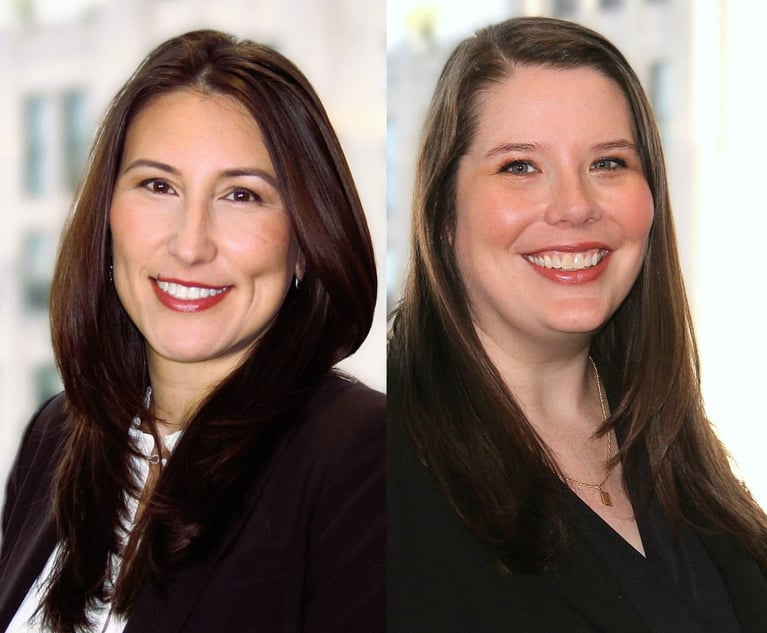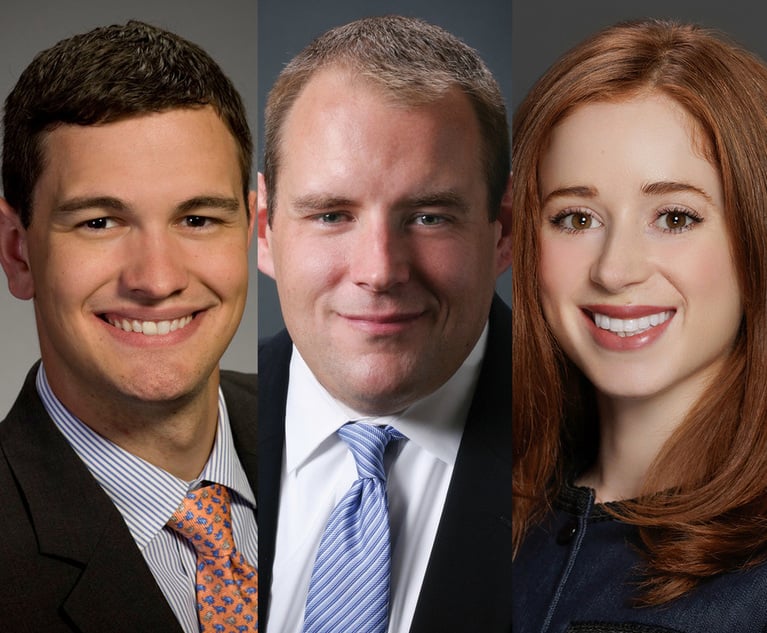The Michigan State Gymnastics Scandal: Lessons for and From Child Protection Investigations
In almost every jurisdiction, teachers and other professionals who work with children are mandated reporters who must report suspected abuse. Perhaps these laws should be extended to protect adult sexual assault victims, as well.
February 13, 2018 at 10:27 AM
7 minute read

In the wake of Larry Nassar's convictions for sexually abusing scores of young gymnasts over the past two decades, many are asking how such abuse could have been allowed to continue so long despite reports of his abuse going back 20 years and a 2014 internal Michigan State University inquiry. One would think the fallout from the Jerry Sandusky child sexual abuse scandal at Penn State would have made an impression on college officials. Apparently not.
So what went wrong? While books might be written on that subject, a number of issues arise that, for those of us who work in child protection, stand out clearly. Child protection investigators face daily situations in which a child has apparently suffered physical, sexual or other abuse, and the facts are unclear. The injury may be obvious, but the child is too young to explain what happened; or the child may allege abuse, but the parent or other caregiver claims the child is not credible. In those situations, the best way to ensure the child is protected is to carry out a full investigation and find out what happened.
As with any other critical inquiry, these investigations are not easy. At the Office of the Child Advocate, where we serve as the ombudsman for Georgia's child protection system, we often review child abuse investigations to ensure quality. And we find certain thorny issues that arise regularly in almost every complex investigation. All investigators handling allegations of sexual assault against adults should remember these guidelines.
Take reports of sexual assault seriously.
According to a Jan. 29 article in The Atlantic, Nassar's victims reported him to coaches, athletic trainers and other university officials numerous times between 1997 and 2015. Those individuals' reports were either dismissed or discounted. The article said that in the 2014 investigation of Amanda Thomashow's complaint that Nassar sexually assaulted her during a medical exam, MSU Title IX investigator Kristine Moore chose to believe Nassar and three medical specialists and an athletic trainer with ties to Nassar.
The Lansing State Journal reported that MSU's Title IX office ”determined she didn't understand the 'nuanced difference' between sexual assault and an appropriate medical procedure.”
In my opinion, Ms. Moore decided that a college graduate of her own institution, a young woman who had likely undergone numerous medical exams in her lifetime, was an idiot.
Those who allege abuse, whether they are children or adults, deserve to have their complaints taken seriously. In the child protection context, we find that many child victims don't report because they are afraid of what might happen to them. Those who do have the courage to report deserve a full investigation of their allegations. Here, it does not appear that MSU even followed up with Ms. Thomashow to tell her what Nassar's witnesses stated and to give her a chance to rebut those witnesses. By failing to “close the loop,” Ms. Moore denied the victim an opportunity to be heard fully.
Had the victims who reported Nassar's assaults beginning in 1997 been children, failure of professionals to relay those victims' reports to police or child protection authorities would have constituted a crime in Georgia and many other states. In almost every jurisdiction, teachers and other professionals who work with children are mandated reporters who must report suspected abuse. Perhaps these laws should be extended to protect adult sexual assault victims, as well. In our experience at OCA, we recognize that those who work in the same institution as the alleged offender are sometimes reluctant to report their co-worker's misconduct; the mandated reporter law serves as an incentive for them to do so. States might consider expanding mandated reporter laws to require professionals to report these cases to appropriate authorities.
Don't let the alleged offender guide your investigation.
It is common in child protection investigations for there to be two sides to the story. A doctor in the emergency room may say that a leg fracture appears to have resulted from abuse, but the parents may vehemently deny that anything occurred or may claim that the child must have suffered the break in a minor fall. In such a situation, caseworkers often rely on “collateral contacts,” individuals who may know the child or family, who may know the family's history and who may be able to shed light on the likelihood that the parent was abusive.
Too often, however, parents direct investigators to friends or family members who will support their story, no matter what. Larry Nassar apparently was successful in such an effort, directing the person who investigated Amanda Thomashow's 2014 claim of sexual abuse to people who would back him up. That investigator, according to The Atlantic, interviewed four individuals who were all personally connected to Nassar and were all employees of MSU. As a result, she likely received reports that were not completely objective.
We regularly remind child protection workers that collateral contacts can be valuable to the extent they are objective and willing to speak the truth without fear of repercussion. We prefer that workers seek to interview the child's teachers, medical providers and other professionals involved with the family over family friends or relatives.
Review prior complaints.
Child protection investigators always check an alleged maltreator's history, even if a prior investigation did not result in a finding of maltreatment. Reviewing prior complaints can reveal additional witnesses and facts and demonstrate how others felt the accused acted towards them. In the 2014 MSU investigation, it does not appear that officials bothered to even ask other athletes or staff about prior reports. Had they done so, the many stories of Nassar's abuse might have come out much earlier.
Status doesn't count.
Among the prior allegations about Nassar that student athletes made to their coaches and trainers, one finds a recurrent response: that Nassar couldn't have done anything bad because he's a “respected” or “world-class” physician. In our review over the years of child abuse deaths and serious injuries, we at OCA have not infrequently come across the individual who was not originally suspected because he or she was a professional or an upstanding member of the community or even a respected advocate for children. While it is human nature to think highly of those who make a good impression, investigators must treat all accused individuals with both equal respect and equal suspicion.
Can an institution police itself?
In child protection systems, when a foster parent or agency employee is accused of abuse, investigations of those allegations are generally conducted by a special unit not connected with the accused's co-workers. In its own 2014 investigation, MSU's own attorney conducted the investigation and used as witnesses MSU's own experts and employees. As John Manly, an attorney for several of the gymnasts, told the Lansing State Journal last November, “The only investigation of Michigan State in this case that's occurred, is by their own attorneys. In my experience, your own attorneys rarely find you guilty.”
In the Nassar case, the public is able to see what happens when adults choose institutional loyalty over their moral obligations to a victim; when powerful individuals are allowed to control an investigation; and when victims' complaints are dismissed or suppressed. Child protection professionals deal with these threats on a regular basis and yet have been able to successfully protect children from those who abuse them. Those who investigate both sexual assault and child abuse can learn much from each other.
As Georgia's Child Advocate for the Protection of Children, Tom Rawlings serves as the state's child welfare ombudsman and helps direct efforts to improve safety and outcomes for children involved with the state's child-serving agencies. He is a former juvenile court judge and author of ALM Media's “Georgia Child Welfare and Juvenile Justice: Policy, Practice, and Procedure.”
This content has been archived. It is available through our partners, LexisNexis® and Bloomberg Law.
To view this content, please continue to their sites.
Not a Lexis Subscriber?
Subscribe Now
Not a Bloomberg Law Subscriber?
Subscribe Now
NOT FOR REPRINT
© 2025 ALM Global, LLC, All Rights Reserved. Request academic re-use from www.copyright.com. All other uses, submit a request to [email protected]. For more information visit Asset & Logo Licensing.
You Might Like
View All

CFPB Proposes Rule to Regulate Data Brokers Selling Sensitive Information
5 minute read
Trending Stories
- 1U.S.- China Trade War: Lawyers and Clients Left 'Relying on the Governments to Sort This Out'
- 2Willkie Adds Five-Lawyer Team From Quinn Emanuel in Germany
- 3AI Discrimination and the 10-Step Bias Elimination Audit
- 4Return to Work Mandates Among Current Mental Health Stressors for Legal Professionals
- 5Friday Newspaper
Who Got The Work
J. Brugh Lower of Gibbons has entered an appearance for industrial equipment supplier Devco Corporation in a pending trademark infringement lawsuit. The suit, accusing the defendant of selling knock-off Graco products, was filed Dec. 18 in New Jersey District Court by Rivkin Radler on behalf of Graco Inc. and Graco Minnesota. The case, assigned to U.S. District Judge Zahid N. Quraishi, is 3:24-cv-11294, Graco Inc. et al v. Devco Corporation.
Who Got The Work
Rebecca Maller-Stein and Kent A. Yalowitz of Arnold & Porter Kaye Scholer have entered their appearances for Hanaco Venture Capital and its executives, Lior Prosor and David Frankel, in a pending securities lawsuit. The action, filed on Dec. 24 in New York Southern District Court by Zell, Aron & Co. on behalf of Goldeneye Advisors, accuses the defendants of negligently and fraudulently managing the plaintiff's $1 million investment. The case, assigned to U.S. District Judge Vernon S. Broderick, is 1:24-cv-09918, Goldeneye Advisors, LLC v. Hanaco Venture Capital, Ltd. et al.
Who Got The Work
Attorneys from A&O Shearman has stepped in as defense counsel for Toronto-Dominion Bank and other defendants in a pending securities class action. The suit, filed Dec. 11 in New York Southern District Court by Bleichmar Fonti & Auld, accuses the defendants of concealing the bank's 'pervasive' deficiencies in regards to its compliance with the Bank Secrecy Act and the quality of its anti-money laundering controls. The case, assigned to U.S. District Judge Arun Subramanian, is 1:24-cv-09445, Gonzalez v. The Toronto-Dominion Bank et al.
Who Got The Work
Crown Castle International, a Pennsylvania company providing shared communications infrastructure, has turned to Luke D. Wolf of Gordon Rees Scully Mansukhani to fend off a pending breach-of-contract lawsuit. The court action, filed Nov. 25 in Michigan Eastern District Court by Hooper Hathaway PC on behalf of The Town Residences LLC, accuses Crown Castle of failing to transfer approximately $30,000 in utility payments from T-Mobile in breach of a roof-top lease and assignment agreement. The case, assigned to U.S. District Judge Susan K. Declercq, is 2:24-cv-13131, The Town Residences LLC v. T-Mobile US, Inc. et al.
Who Got The Work
Wilfred P. Coronato and Daniel M. Schwartz of McCarter & English have stepped in as defense counsel to Electrolux Home Products Inc. in a pending product liability lawsuit. The court action, filed Nov. 26 in New York Eastern District Court by Poulos Lopiccolo PC and Nagel Rice LLP on behalf of David Stern, alleges that the defendant's refrigerators’ drawers and shelving repeatedly break and fall apart within months after purchase. The case, assigned to U.S. District Judge Joan M. Azrack, is 2:24-cv-08204, Stern v. Electrolux Home Products, Inc.
Featured Firms
Law Offices of Gary Martin Hays & Associates, P.C.
(470) 294-1674
Law Offices of Mark E. Salomone
(857) 444-6468
Smith & Hassler
(713) 739-1250







